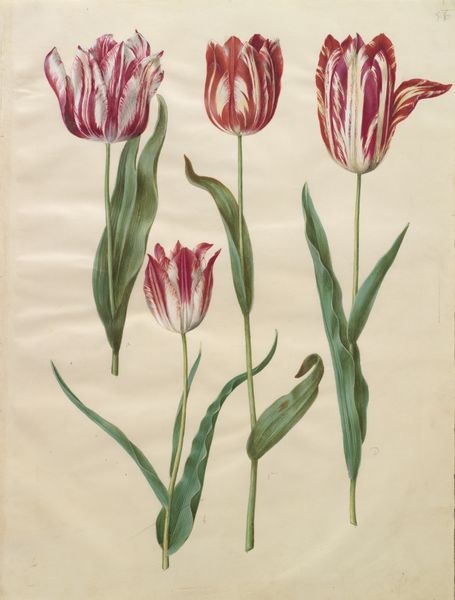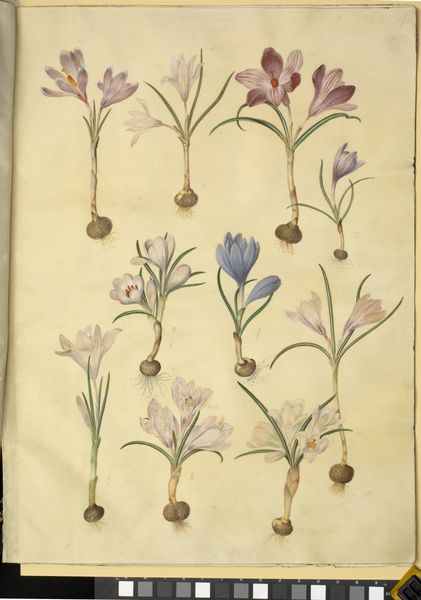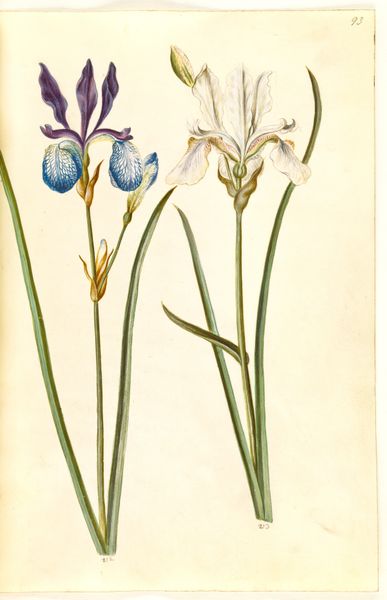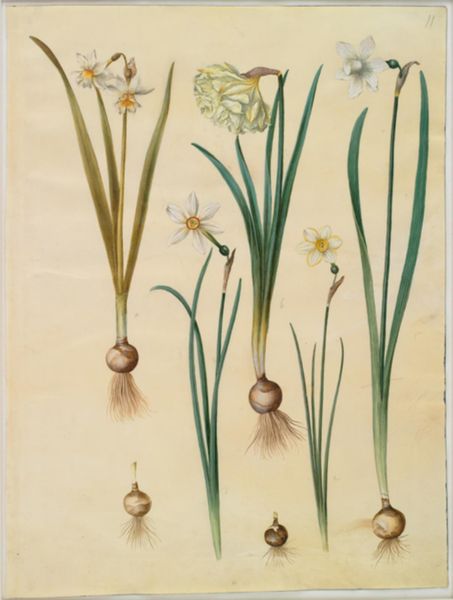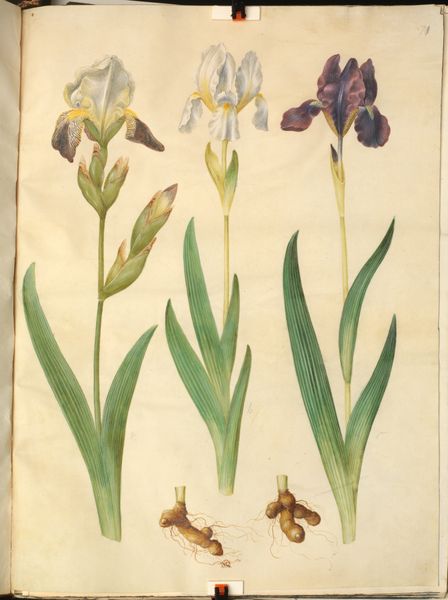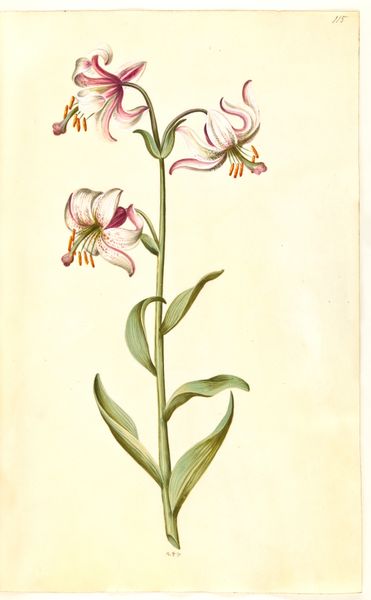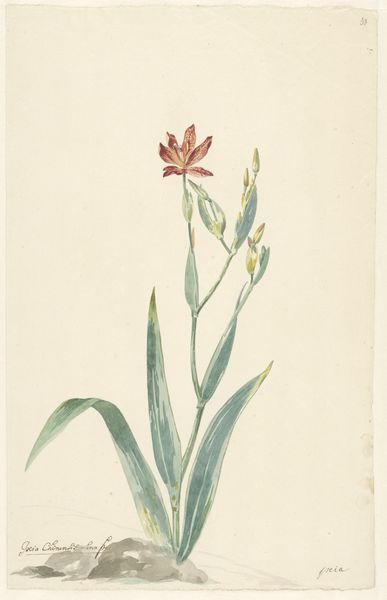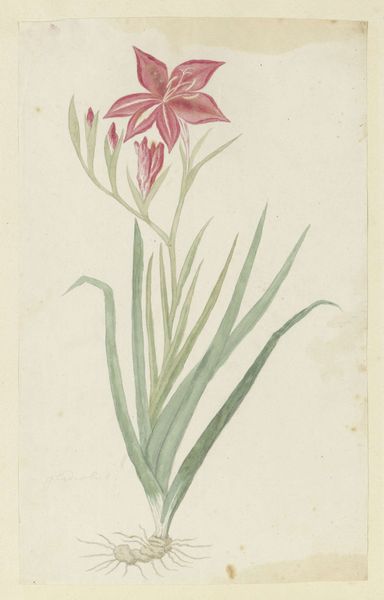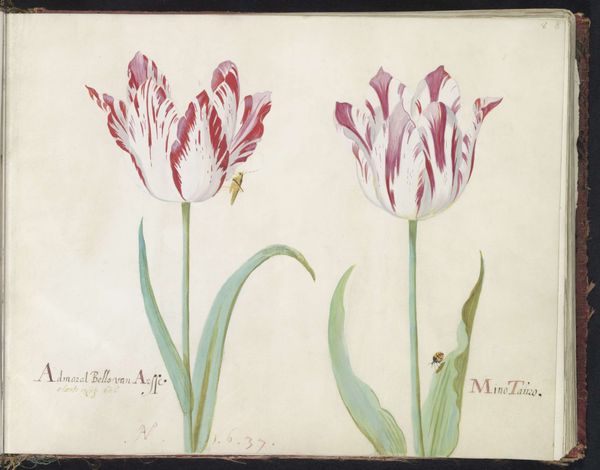
Tulipa clusiana (clusius-tulipan); Fritillaria persica (persisk fritillaria) 1649 - 1659
0:00
0:00
drawing, gouache, watercolor
#
drawing
#
gouache
#
watercolor
#
watercolour illustration
#
botanical art
#
watercolor
Dimensions: 505 mm (height) x 385 mm (width) (bladmaal)
Hans Simon Holtzbecker made this botanical drawing of a clusius tulip and Persian fritillary in seventeenth-century Denmark. But this isn't simply a dispassionate record of plant life. Holtzbecker was a leading artist in a courtly culture deeply invested in the display of wealth and power through the natural world. The exotic tulips, imported from the Ottoman Empire, were not only prized for their beauty but also for their rarity and cost. During this time, "tulip mania" gripped the Dutch Republic, with single bulbs trading for exorbitant prices. Here, Holtzbecker’s meticulous rendering, scientific precision and artistic skill elevated these plants to the status of coveted objects. The image connects to the wider social and cultural context, serving as a symbol of status and the pursuit of luxury that was shaping European society. To fully understand this drawing, we need to examine the courtly context in which Holtzbecker operated, looking at estate records and botanical inventories to understand the significance of these particular flowers within the Danish court. This allows us to interpret the drawing as more than just a botanical study, but as a window into the social values of its time.
Comments
No comments
Be the first to comment and join the conversation on the ultimate creative platform.

